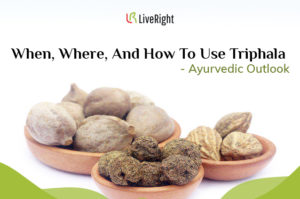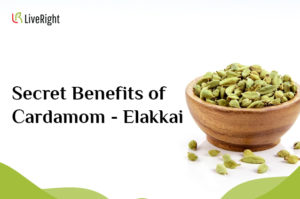Last updated on August 21, 2024 by Dr. Subashri Thanigaivel
“Think little of thy human body: blood, bones, and skin; a pretty piece of knit and twisted work, consisting of joints, nerves, veins, and arteries; the connect of these in a soul.”
There are plenty of daily chores and activities that we do every day in our routine. All these must essentially involve our body movements.
Have you ever thought about how our body parts, especially joints and muscles help in our daily body movements?
Joints are those which connect bones. They provide stability to the skeleton and aid in movement.
Is your knee feeling sleepy?
Does your shoulder shout that it is tired?
Your ankle says “Please help me, I am collapsing”
Or you sense agony in your hips
These are a way of expressing by your joints that they are in pain. Joint pain whether bearable or unbearable is one of the most common signs that you are suffering from Arthritis.
Joint pain may be a temporary or chronic condition. Chronic conditions of swelling, stiffness, patchy red areas around your joints, or unbearable pain in your joints can make you suffer from arthritis.
What is Osteoarthritis?
Technically, Osteoarthritis is a degenerative condition where the protective cushions at the end of the bones between the joints named “cartilage” are prone to wear and tear over time.
Cartilage is a tough, rubbery, flexible substance that’s softer than bone. Its job is to protect the ends of bones within a joint, allowing them to move easily against each other.
When cartilage breaks down, these bone surfaces become pitted and rough. It makes the bones rub against one another creating stress and friction at your joints.
This leads to an Osteoarthritis condition, causing pain within your joints and surrounding areas.

Difference between Arthritis and Osteoarthritis
When we read the word Arthritis, it is generally confused with the words Osteoarthritis and Rheumatoid Arthritis. Arthritis is a wide term that includes various types like Osteoarthritis, Rheumatoid Arthritis, psoriatic arthritis, and gout.
Arthritis, on the other hand, is not caused by the normal wear and tear of bones. Instead, it is an inflammation that leads to the secretion of substances, gradually destroying the structure of the joint. It can be of infectious, genetic, or metabolic origin.
So, Arthritis may not necessarily be only Osteoarthritis.
What are the signs of Osteoarthritis?
- Joint Pain
Most commonly, joint pain occurs in the neck, shoulder, hip, knee, and ankle areas.
And also the first and most common sign of Osteoarthritis is- you suffering from joint pain.

- Crackling or Popping sounds
Sometimes due to the cartilage wear and tear off, you might hear mild crackling or popping sounds in your joint areas. This can be an early sign of Osteoarthritis.
- Stiffness/Loss of Flexibility
When your joints have reduced range of motion or passive motion, there are chances that Osteoarthritis has hit you. When you have joint pain, you would restrain from using that joint more often for your routine activities. This in turn leads to stiffness around that joint area that might aggravate your Osteoarthritis state.
- Inflammation
When you feel there is swelling in your joint areas like the knee or shoulder, try to immediately see a doctor. This inflammation may aggravate your pain causing red patches or excess heat(friction) in your joint areas.
If you have the above signs then you are probably in the early stage of Osteoarthritis. In case you have bow legs which is termed as genu varum(Varus knees) condition then it is a sign that you have been suffering from Osteoarthritis for over years.

Wondering what are the risk factors for Osteoarthritis?
“With awareness comes responsibility and choice”
Once you become aware of what is your plan or what should follow your decision, you can eliminate the risk and discrepancies way too easily.
Here are some factors which might lead to Osteoarthritis.
- Getting older comes along with various complications as body function starts to go down in your system. If you are 40+ age, then try to be aware of your joint pain, its frequency, areas of joint where pain occurs, and the duration of your joint pain.
- If you are having a history of injury or surgery complications in your joints, look out when there is passive or reduced movement in those joints. Sometimes inflammation might easily trigger in those joints.
- Being Overweight or Obese is an indirect factor that might increase the chances of Osteoarthritis condition. If you are overweight, the joints are under pressure to balance the excess fats in your muscle. Also, fat releases inflammation-causing proteins which in turn affect the cartilage in the joints. To put simply, excess fat places a mechanical load on cartilage.
Obese people with Osteoarthritis in one knee are 5 times more likely to develop Osteoarthritis in the other knee as compared to healthy-weight people.
RELATED: How to eat for Joint pain
- The nature of your work is also one of the significant factors that triggers Osteoarthritis condition in the later phase of your life.
Say you are a sportsman and you are a left-hand tennis player. Since you are using your left-side joints more often, then you might be prone to Osteoarthritis in your left shoulder or left ankle, or left-side joints. Having occupations in kneeling, weight-lifting, climbing, or involving constant sporting activities might increase the chances of Osteoarthritis condition.
Do’s and Don’ts for Osteoarthritis
When there is a list of Do’s and Don’ts in front of you, many of us first look at the don’ts side so that we can avoid the extremity of the impact caused by Don’ts. We suggest you that look upon the Do’s to heal yourself and parallelly the Don’ts to restrain from the worst.
Do’s:
- Regular knee and joint-friendly exercises(link)
- Keeping hot water bags for warming up your joints
- Eat a healthy meal with mixed nutrients
- Stay active with minimal joint movements
Don’ts:
- High-impact exercises ( say, doing squats, lounges, or pushups)
- Ignore pain or new symptoms
- Put on weight
RELATED: Simple ways to know about managing your Joint Pain
What’s there about Osteoarthritis in Ayurveda?
A condition similar to Osteoarthritis has been explained as “Sandhigatavatam” in Ayurveda. Here, Vata is aggravated causing a reduction in the synovial fluid inside the joint capsule, leading to pain in your joints.
It is also related to a type of Dhathukshaya Vikara(Degenerative disease). The body has to be nourished to overcome the degenerative condition which is known ad Dhatu poshana which helps you to pacify the aggravated Vata levels in your body.
Osteoarthritis is curable.
There are many natural remedies available in Ayurveda to make your cartilage heal and make your joints strong.
Before trying Home remedies, kindly consult an ayurvedic physician to suggest a method based on your dosha and other complications.
Effects of Nirgundi
The roots, barks, and fruits of Nirgundi contain phenomenal medicinal properties. It contains anti-inflammatory content and is widely used for pain suppressing activities. The oil prepared from the leaves can also be of great relief for joint pain.

Healing properties of Ashwagandha
It is considered as Rasayana(meaning: nutrient fluid) that makes you strong internally and helps in increasing your lifespan. The use of Ashwagandha leaves can reduce stress and pain in your joint areas and is considered a great cure for both Arthritis and Osteoarthritis.

Ginger
Ginger works as an anti-inflammatory pain killer. It has extraordinary properties that help in lowering cholesterol, blood sugar levels, and also internal inflammations in your body.

Shallaki
Shallaki or Salai is an ancient Indian Ayurvedic herb that can manage joint pain, prevent Arthritis, and also improves your joint mobility. Other than helping with joints, it can boost your immunity. Shallaki’s benefits are unlimited because of its great medicinal property.
Eranda Tailam
Eranda tailam(Castor oil) is a natural moisturizer that has wound healing properties and gives anti-inflammatory effects. When applied in joints, it can boost the strength of the cartilage and helps in treating Osteoarthritis.
It helps in keeping your doshas balanced in your body by reducing the aggravated Vata that causes the degenerative condition of your joints.
Panchakarma Treatment
Panchakarma Treatment is based on ayurvedic principles which help in cleansing and rejuvenating your mind and body. It removes the toxic elements from your body and helps in improving your health condition.
For Osteoarthritis conditions, opting for ayurvedic procedures like Abyangam,snehanam,vasti, and upanaham are highly effective.
These procedures mainly involve massage at the affected joints, applying medicated oil for your joint pain, and herbal bandaging treatments to relieve localized pain, swelling, and inflammation.

Can you slow down the progression of Osteoarthritis?
Joint pains occur in most of the adult population. It is indeed common and there is nothing to worry about. The effective suggestion is to be aware of your symptoms and to look at whether on a long-term basis you are suffering from signs of Osteoarthritis. If yes, consult a doctor and look for natural remedies for effective recovery. At Liveright, we provide personalized solutions for your Osteoarthritis recovery and also we offer you some insights about the ayurvedic lifestyle.




